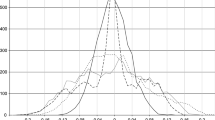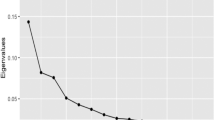
Overview
- Explains the complexity of the topics in an accesible and readible manner
- Includes empirical examples that are based on real data
- Provides an overview of the different types of forecasting models
Part of the book series: Contributions to Economics (CE)
Access this book
Tax calculation will be finalised at checkout
Other ways to access
About this book
Forecasting from multi-equation models has very rarely been the focus in econometric literature. In response, this book presents a range of methodologies to approach this complex field and offers readers essential information on forecasting from multi-equation econometric micromodels.
In the twentieth century, significant interest in econometric macromodels emerged. These multi-equation models are mostly systems of interdependent equations, most often used to describe the national economies of various countries. The book analyzes econometric forecasting procedures and illustrates them with empirical examples that are based on real economic (mostly business-derived) data. The procedure of forecast building from systems of interdependent equations is presented for two categories of econometric models: models with a feedback effect and models with closed-loop links between interdependent variables.
The forecasts obtained via this technique are compared with the results derived from reduced-form equations of the respective econometric model. The author also generalizes the rules of the reduced-recursive (helical, iterative) procedure application, against the backdrop of the proposed method of forecast building from reduced-form equations of systems of interdependent equations. Given its scope, the book will appeal not only to PhD students and researchers, but also undergraduate students and academics in general.
Similar content being viewed by others
Keywords
Table of contents (6 chapters)
-
Front Matter
-
Back Matter
Authors and Affiliations
About the author
Jerzy Witold Wiśniewski is full professor at the Nicolaus Copernicus University in Toruń (Poland), He has authored over 150 scientific papers in the field of econometrics and statistics His main research focus is on micro-econometrics.
Bibliographic Information
Book Title: Forecasting from Multi-equation Econometric Micromodels
Authors: Jerzy Witold Wiśniewski
Series Title: Contributions to Economics
DOI: https://doi.org/10.1007/978-3-031-27492-3
Publisher: Springer Cham
eBook Packages: Economics and Finance, Economics and Finance (R0)
Copyright Information: The Editor(s) (if applicable) and The Author(s), under exclusive license to Springer Nature Switzerland AG 2023
Hardcover ISBN: 978-3-031-27491-6Published: 12 May 2023
Softcover ISBN: 978-3-031-27494-7Published: 12 May 2024
eBook ISBN: 978-3-031-27492-3Published: 11 May 2023
Series ISSN: 1431-1933
Series E-ISSN: 2197-7178
Edition Number: 1
Number of Pages: VIII, 148
Number of Illustrations: 9 b/w illustrations, 53 illustrations in colour
Topics: Econometrics, Economic Theory/Quantitative Economics/Mathematical Methods, Statistics for Business, Management, Economics, Finance, Insurance



